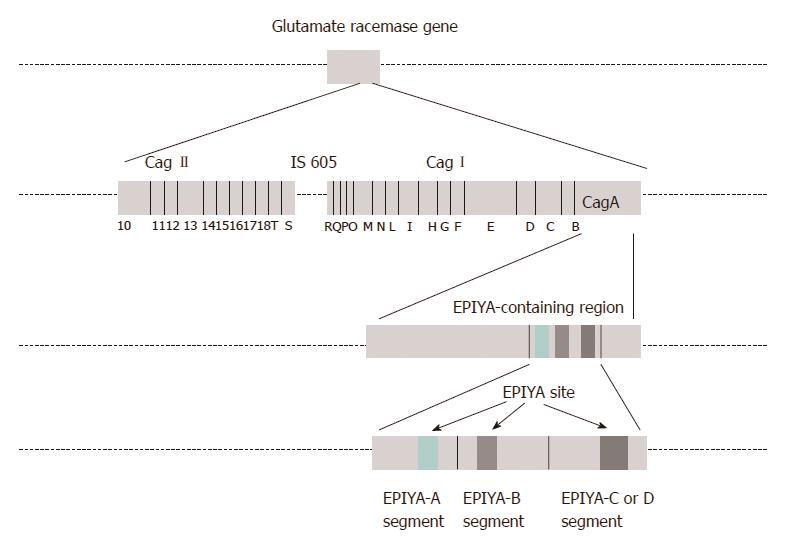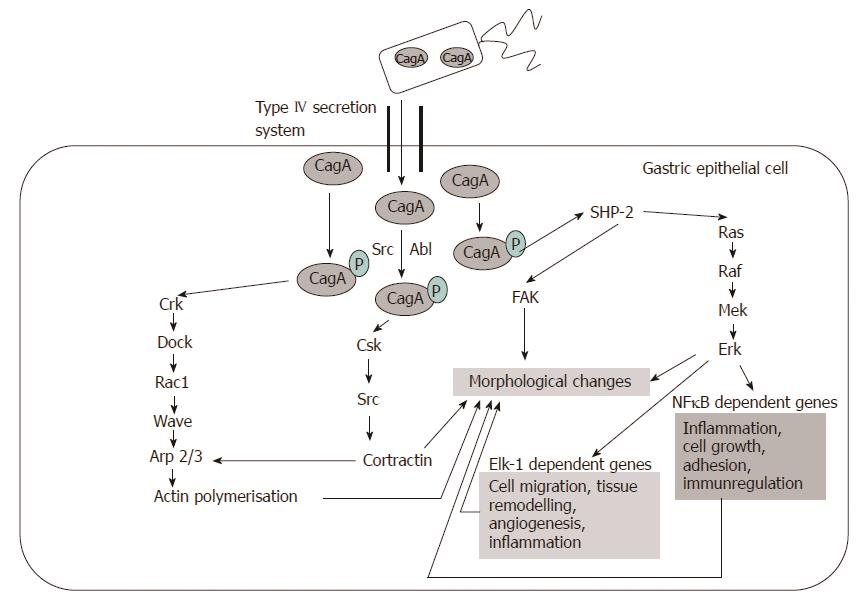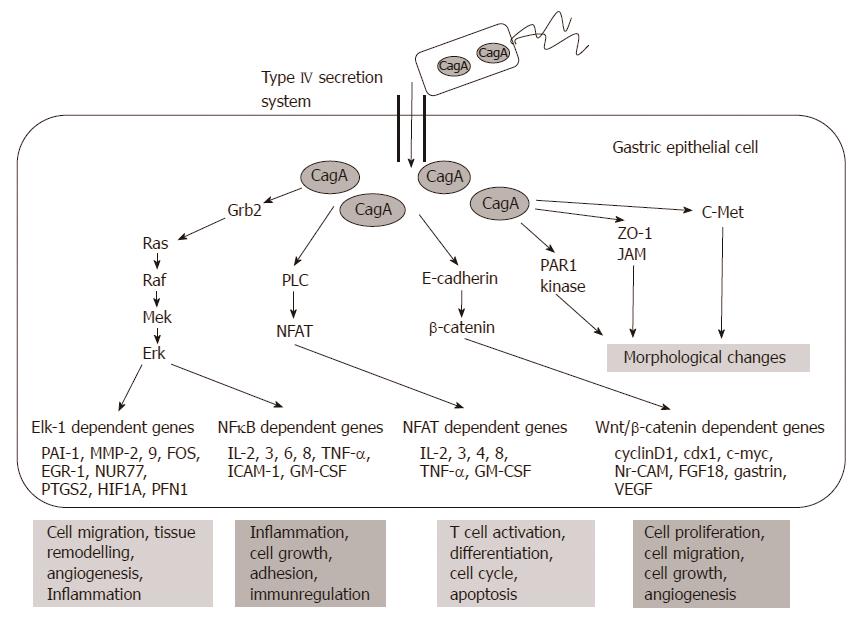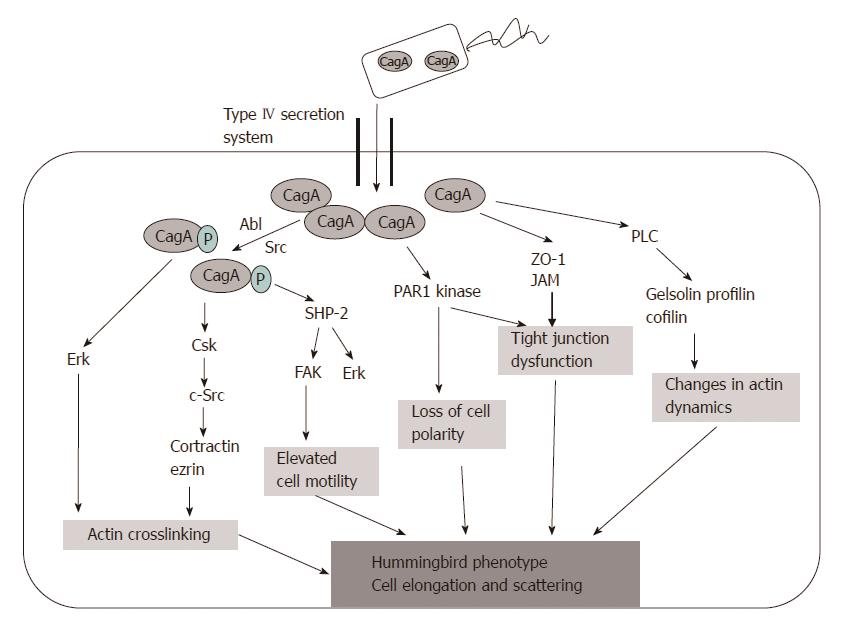Copyright
©2014 Baishideng Publishing Group Inc.
World J Gastroenterol. Jun 7, 2014; 20(21): 6386-6399
Published online Jun 7, 2014. doi: 10.3748/wjg.v20.i21.6386
Published online Jun 7, 2014. doi: 10.3748/wjg.v20.i21.6386
Figure 1 Cytotoxin-associated gene pathogenicity island.
CagA: Cytotoxin-associated gene A product; EPIYA: Glutamate-proline-isoleucine-tyrosine-alanine.
Figure 2 Targets of phosphorylated cytotoxin-associated gene A.
Based on the article from Current Opinion in Microbiology, Hatakeyama M, SagA of CagA in Helicobacter pylori pathogenesis, 11, 30-37, Copyright (2008), with permission from Elsevier[7]. CagA: Cytotoxin-associated gene A product; NFκB: Nuclear factor κB; FAK: Focal adhesion kinase; Csk: C-terminal Src kinase.
Figure 3 Targets of non-phosphorylated cytotoxin-associated gene a product.
Based on the article from Current Opinion in Microbiology, Hatakeyama M, SagA of CagA in Helicobacter pylori pathogenesis, 11, 30-37, Copyright (2008), with permission from Elsevier[7]. CagA: Cytotoxin-associated gene A product; PLC: Phospholipase C gamma; PAR1: Kinase partitioning-defective 1b; ZO-1: Zonula occludens 1; JAM: Junctional adhesion molecule A; NFκB: Nuclear factor κB; TNF-α: Tumor necrosis factor-α; IL: Interleukin.
Figure 4 Development of “hummingbird phenotype”.
CagA: Cytotoxin-associated gene A product; PLC: Phospholipase C gamma; PAR1: Kinase partitioning-defective 1b; ZO-1: Zonula occludens 1.
- Citation: Hagymási K, Tulassay Z. Helicobacter pylori infection: New pathogenetic and clinical aspects. World J Gastroenterol 2014; 20(21): 6386-6399
- URL: https://www.wjgnet.com/1007-9327/full/v20/i21/6386.htm
- DOI: https://dx.doi.org/10.3748/wjg.v20.i21.6386












